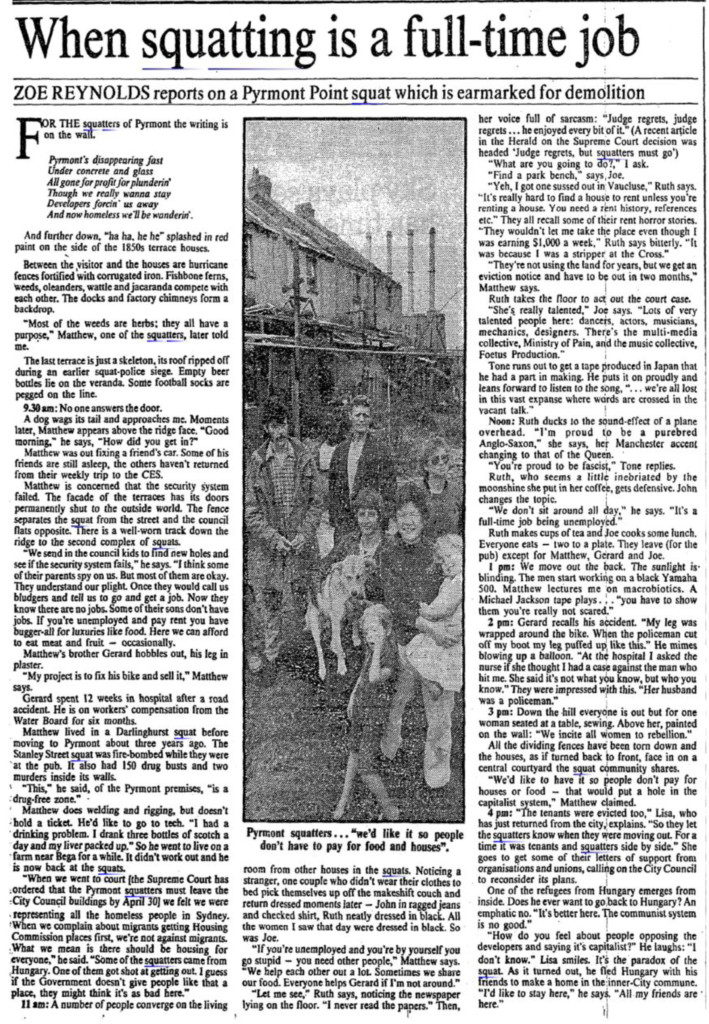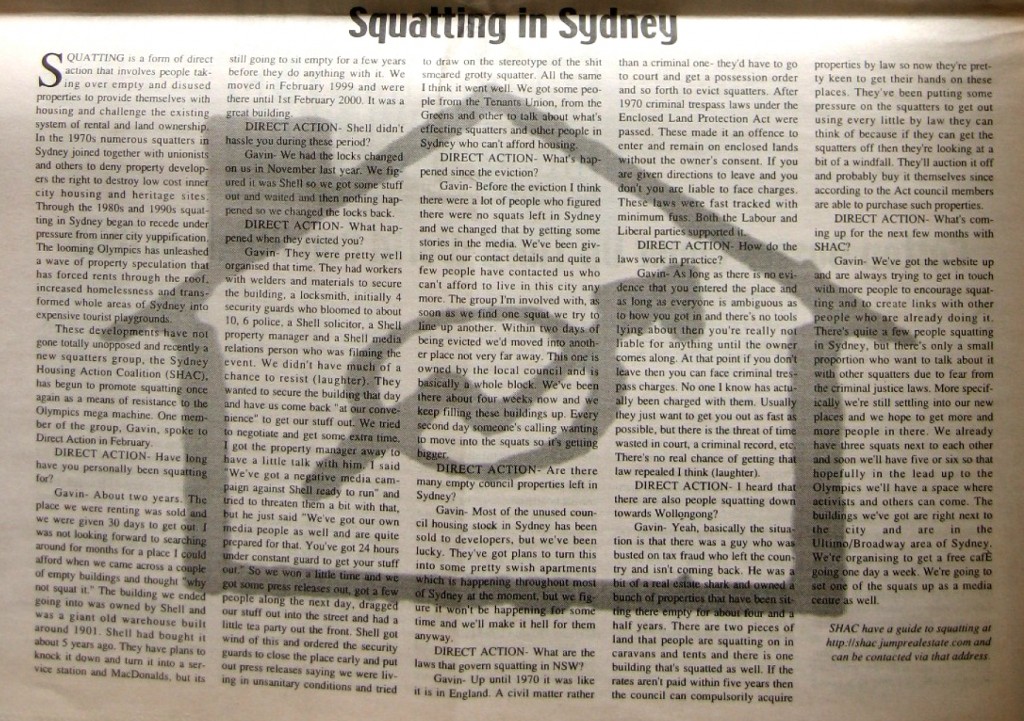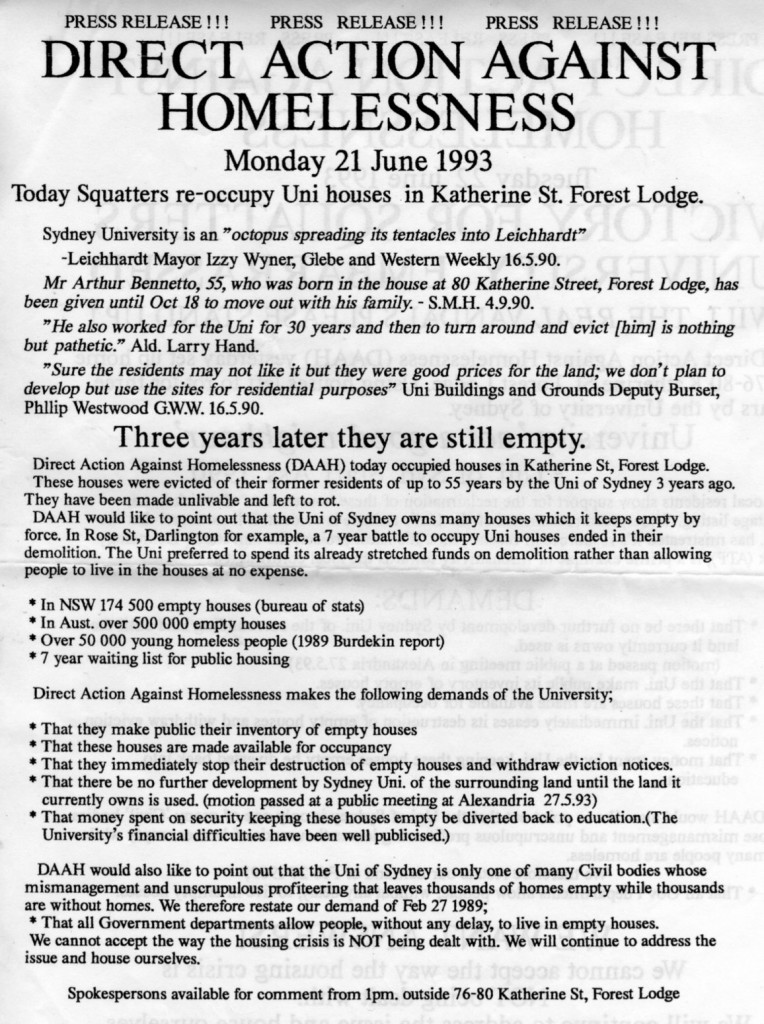The following story about the 1980s squatting scene is by Rohan Wightman. It first appeared on Radio National’s 360 Documentary website in 2014.
A Stranger Changed My Life
I fled the suburbs to the city with my mates, Paris and Stoffy. They were fleeing the cops. I was fleeing boredom. We opened a squat on Hoddle Street, a thin terrace house wedged between two empty houses. The traffic never stopped and trains shrieked into the station behind us.
Friends came around, bongs were shared, beers drained and conversations flared. They were yobs, loyal and loving to each other, nasty and brutal to outsiders. I was lost, and in them found an alternative to the pre-ordained career and marriage path of suburbia.
It was a quiet night, Bowie on the stereo, a cloud of pot in the air. A knock on the door startled us from our reverie. Two punks stood there, one with a two foot bright red mohawk, his companion, young and thin, peered down the corridor.
Taken aback by this pair of exotic wonderment, ‘hello’ stumbled from my lips, ‘think you’ve got the wrong place.’
‘No,’ smiled red Mohawk. ‘I’m Nick, this is Crissie,’ the woman next to him smiled. ‘Cops just kicked us out of our squat. Hoping we could move next door.
I invited them in, offered bongs while Paris glared and Stoffy’s desiring eyes undressed Crissie.
The houses were soon filled with colourful ragged strangers who became friends. Most days they sat in our lounge-room, joined me in market expeditions and I them in protest actions.
My suburban friends, frequent visitors still, were unsettled by these newcomers with their radical ideas and queer politics. Anger seethed in the grimy air.
‘I couldn’t be your friend if you were gay,’ declared my best friend Stoffy. Our friendship is no more than a dandelion in the breeze I thought, as I walked away. I didn’t know what I was and didn’t really care.
That night my new found mates and I piled into my car. My parents were away. With a hidden key the house was ours. We watched videos and shared all we had.
Late morning’s light revealed a burnt out car in the lane behind our squat. ‘My car,’ moaned Steve, ‘what the hell happened?’ We stumbled from my car into the house. Paris, wild eyed on speed screamed, ‘you took those stinking punks away and left us here.
‘They’ve got names, this is Nick, and Crissy, that’s Steve and Billy, there’s Liz and Troy. Don’t call them punks.’
Paris speared a metal pole into the wall near Nick’s head. ‘They’re just stinking punks to me.’
My suburban friends left soon after, shaking their heads as I chose to stay.
‘This is for you,’ said Nick, as the last of them walked away. He pressed a tape into my hand. ‘Side one’s Crass, the other is Zounds. It’s not quiet Bowie but I think you’ll like it.’ His red Mohawk fluttered as he smiled at me.
I opened the door to him, a stranger, only two months before, and my life was changed evermore.
 The cover of a newspaper produced about the Victoria Street squats in 1974.
The cover of a newspaper produced about the Victoria Street squats in 1974.














